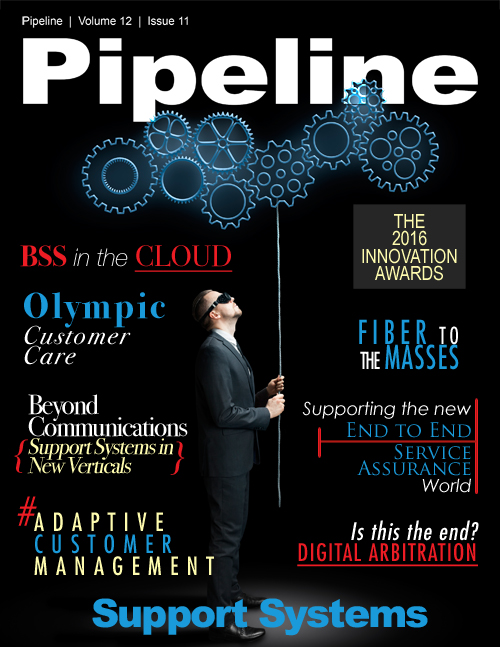Fiber to the Masses
To customize workflows to align with current processes, or develop new services and APIs to activate customer devices, it is ideal to have a dedicated resource who understands your network and your business. You will rest easier knowing that help is quickly available should any operational issues occur with your solution. You also need to ensure that the solution is fast and intuitive, minimizing employee adoption and training time with customized interfaces. It may be better to lean on the experience of service and UI professionals.
Service Assurance in a Fiber Environment
Continuously optimize your network
FTTx increases the pipe over the last mile to deliver higher-bandwidth services to more customers, but this doesn’t mean that networks won’t become clogged with over-usage, especially where traditional delivery network funnel points exist or have not been upgraded. An effective way of increasing subscribers’ loyalty and ensuring QoE remains high is to continuously collect and analyze usage and performance data. Higher capacity hardware will be required as more high-quality OTT-content services offering VoD, P2P video, and music streaming continue to enter the market.
By using a Big Data platform, you gain insight into what’s happening throughout all parts of your network, including routers, termination systems, and devices. You can then actively manage and reduce network congestion with automated policies and strategies that deal with congestion issues. Using real-time subscriber and geographic-specific information to intelligently split nodes and make infrastructure investments, you will effectively distribute bandwidth so that all subscribers enjoy the same QoE. This data enables timely decisions on hardware investment predictions to meet future requirements, ensuring network capacity meets demand and service quality stays consistent.
Manage devices beyond the fiber line
Once fiber services reach a demarcation point, you are no better off attempting to improve service speed and quality if you can’t manage what’s going on within the subscriber premises. An end-to-end service activation and fulfillment solution must include ways to monitor network speed beyond the last mile.
Operation teams must validate the activation of new devices within the subscriber home network, perform spot testing for recently installed or chronic-issue subscribers to validate QoE, and manage key-performance indicators that not only inform operations of potential issues before they become visible to the subscriber, but also streamline the reporting and analysis process. With insight gained through remote protocols, you gain the immense power to see and rapidly resolve customer issues, ensure CPE firmware stays up to date, and maintain high customer QoE.
Add robust capabilities and value-added services
Your FTTx service fulfillment and activation solution should synchronously activate new or existing services to multiple devices in as few steps as possible. You should strive to create an environment where your subscribers can plug in their devices and start using them within moments. Automating the process for service activation and fulfillment not only removes the swivel chair environment from your organization, but it also decreases time-to-delivery for new services -- directly impacting your bottom line.
To further assist with customer management, a FTTx service fulfillment solution should supply a robust and customizable subscriber self-service portal as a value-added service. Tech-savvy subscribers want control over their network and services, and the convenience of managing them without instruction. By empowering your subscribers with a self-service portal suitable for varying degrees of technical know-how, they’ll be able to perform basic diagnostics and troubleshooting, set up WiFi connectivity, or adjust parental controls. This lowers CSR call volume and provides an opportunity for increased ARPU by enabling your subscribers to purchase new add-ons and services by themselves.
Fiber: more than just an infrastructure upgrade
There is much to consider when implementing fiber services. Simply rolling out a FTTx infrastructure to meet the bandwidth demands required by an influx of OTT content, P2P video communication, HD and 4K IPTV, and multi-device home networks is not enough. To deliver quality service experience worthy of the speeds promised by fiber, operators must consolidate their back-office processes with scalable platforms that streamline converged services activation, automate and integrate B/OSS processes, manage bandwidth congestion, support network investments, and improve subscriber QoE.
A converged OSS platform that enables end-to-end service fulfillment and activation, access service and network intelligence, and enables better control over services, devices, and bandwidth will maximize the capacity offered by fiber, scale with the network and business as it grows, and keep subscribers satisfied throughout their service contracts. By connecting subscribers across the world with increased resilience to impairments and faster service speeds using FTTx, operators can accelerate their converged service rollouts to gain a competitive edge.



















